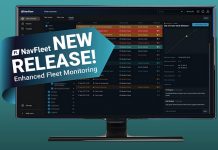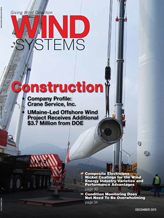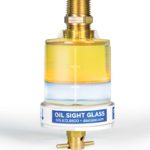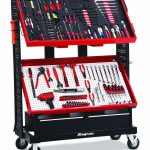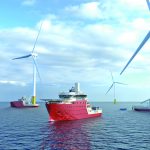While condition monitoring has a rather simple definition, it is only when we are caught up in “analysis paralysis” syndrome that our minds get in the way and a common sense Czar is required with regards to our thinking. Performance, operations, and engineering managers are overwhelmed with information when what they need is insight and to be told what is required and when.
Condition monitoring can be defined as the process of systematic data collection and evaluation to identify changes in performance or condition of a system or its components, such that remedial action may be planned in a cost-effective manner to maintain operational reliability, productivity, and profitability.
In the wind energy industry, thousands, if not millions, of data points are collected every second through methods such as real-time sensors installed to monitor conditions including temperature, lubricant conditions, drive train vibrations, turbine production, generator output, and weather conditions. This information is typically fed into an online recording system and analyzed through sophisticated algorithms to determine if the data point is within acceptable limits. When an alert level is reached, most systems will flag it according to criticality and issue a predetermined maintenance decision that includes some type of corrective action.
Unfortunately, this is where most of these sophisticated systems stop and the completion of the ensuing maintenance work is turned over to a computerized maintenance management system (CMMS) or an enterprise resource planning (ERP) system. ERP is a business-management software (typically a suite of integrated applications) that an organization can use to collect, store, manage, and interpret data from many business activities including product planning and cost; manufacturing or service delivery; marketing and sales; inventory management; and shipping and payment.
While these systems by design are excellent at managing tasks (work orders) and parts (inventory and procurement), they often lack the necessary depth or detail to facilitate the full maintenance workflow of inspection, troubleshooting, repair, and documentation of the defect. This is typically left in the hands of the technician with little more than a one-line task description (i.e., perform borescope on gearbox, inspect bearings for flaking, change oil and filters, etc.).
While most experienced technicians are capable of performing the maintenance workflow and restoring the turbine to a normal state, they often require access to additional resources in order to complete the work, such as equipment history, specific defect troubleshooting, and repair procedures created from previous similar defects, as well as OEM or engineering technical advice. This is often difficult to obtain while up-tower performing the work. This can be quite overwhelming for a less-experienced technician and lead to significant downtime in order to address anything but the simplest defect.
When the work is finally completed, any documentation that is recorded is typically paper-based and minimally detailed. A CMMS or ERP system usually only requires minimum feedback from the work performed, such as an update of the task status to be completed or closed, indicating that the work was indeed performed. It is only through the initiative of dedicated technicians or maintenance clerks that additional detailed information, such as inspection findings, performed work activities, and any identified additional work requirements, make it into these available systems due to the limited tools available or the complexity of entering such information. The limitations of this process usually only surface at the next maintenance service when a different technician attempts to perform work on the same turbine and discovers the limited or nonexistent historical information to reference.
In an environment of rapid growth, employee turnover, and cost pressures, the challenge for wind farm owners and operators is to better manage this maintenance workflow and data collection/feedback loop. Some of the financial and performance benefits of improving this process include increased turbine reliability and availability, a reduction in overall downtime (particularly mean time to repair) leading to a reduction in overall maintenance costs, and improved employee output and knowledge.
Based on experience and collaboration with experts from other global industries over the past 20 years, I have identified some key gaps. I would like to highlight just a few characteristics of an effective maintenance workflow and feedback process that, when combined with a well-organized condition monitoring program, can leverage vibration and oil analysis, allowing for better, more informed decisions.
Condition monitoring in a 360-degree holistic approach provides the potential tools and abilities to make your operations better in the following ways:
• The ability and process to capture and leverage the experience and knowledge of the entire workforce through a knowledge management system that is readily accessible when performing maintenance activities.
• Tools that allow expert collaboration over defect resolution while the technician is performing the maintenance work, either through live access to experts or technical information.
• Tools that simplify field inspection and data capture, including photos, notes, and quantitative measurements, eliminating the need for paper-based recording, the additional time needed to do so, and error-prone inefficiency when simple things have to be hand-written.
• Historical data presentation so previous maintenance work is available for reference. (The old saying that what gets measured gets done, is true.)
• Ability to determine the effectiveness of maintenance work and not just the completion of the task, such as was the defect removed, as well as KPI metrics to measure.
• Historically used oil and grease analysis compared bulk lubricants within service lubricants; typically, oil sampling that is taken and sent to a testing lab takes place approximately every six months. Test results from oil compare the condition of the lubricant in service as well as the wear anomalies that may be taking place. These are identified within the lubricant and filters as applicable. The development of Best Practices and Consistency is vital and can go a long way on lubricant change on condition.
• Regarding condition monitoring, ensuring proper sensor sensitivity ranges as well as installation locations and knowing your drive train configurations and kinematic details is extremely important.
• Setting alert levels, alarms, and recommended actions that are achievable use the power of fleet benchmarking.
• Know your assets and ensure your work force is properly trained to do their jobs, since often we see that the only training they may have received was from a previous employer.
• Finally, take charge by using all data and information available and do not rely on just one particular technology; instead, use all that is at your disposal since each will have inherent strengths versus another.
In conclusion, with condition monitoring, a world of information is at your disposal. What’s most important is what you choose to do with it. Will you be an early adopter creating opportunities for yourself and your organization, or will you chase after opportunities while the world around you passes you by?

















